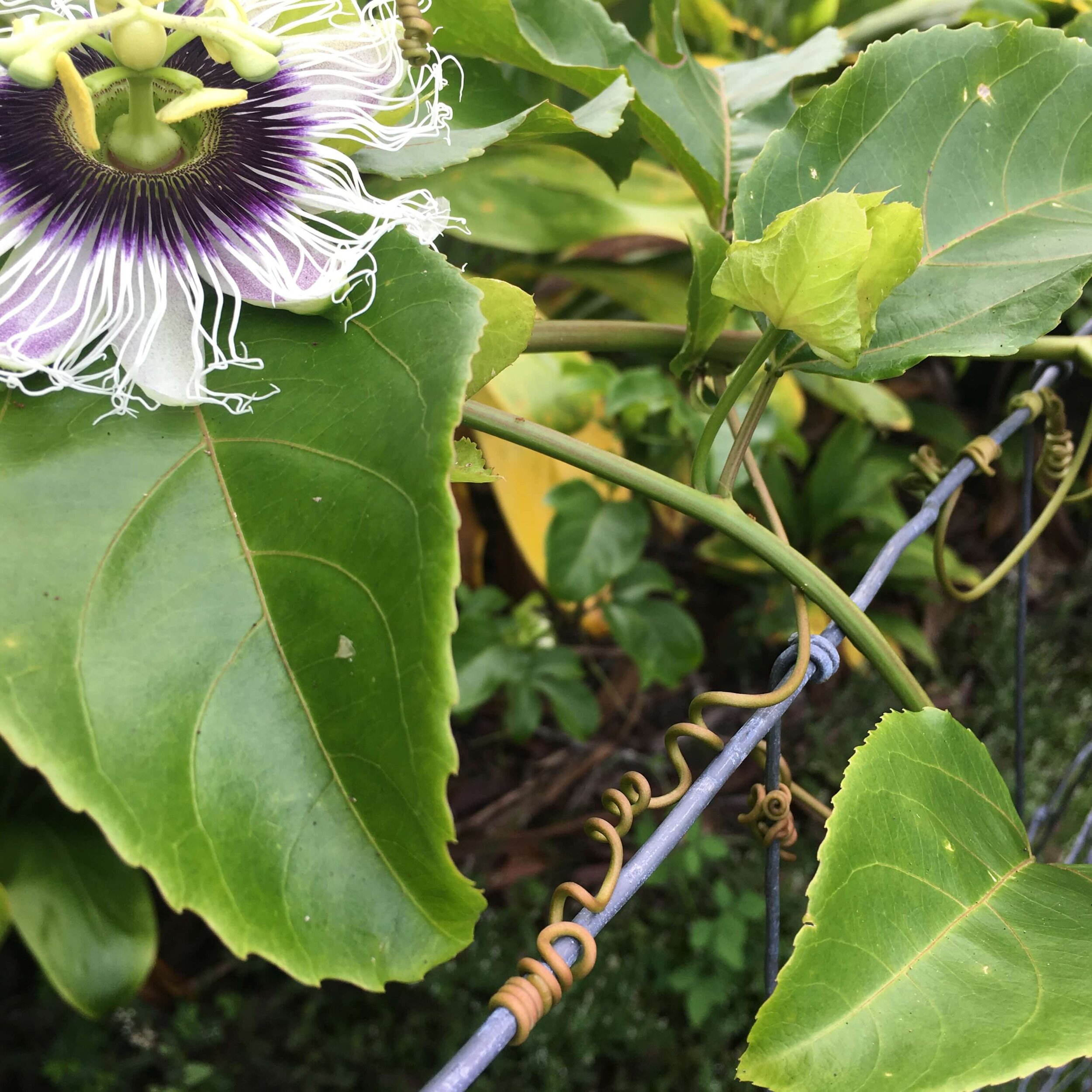What does the lilikoi (passionfruit) look like as it grows?
Better known as ‘passionfruit’ if you’ve visited the islands, you’ll remember the delicious, sweet, tart and tangy flavor that lilikoi brings to the party. Everything from ice cream to iced tea gets a massive upgrade when a splash of lilikoi is added! With more folks discovering the fabulous taste of Hawaiian grown passionfruit, it’s no wonder we noticed a significant uptick in the sales of our passionfruit seeds over the past 18 months. So last year we began planting them. As a result, our first crop of these new starts are ready to find a home with you!
To give you an idea of what these look like, here are some pictures of lilikoi on our farm:
All the work of starting these seeds has already been done for you. Each one comes in a 2 inch pot, already growing!
As you probably know, the passionfruit is a crawler. You’ll need a trellis or some other object that they can climb. On our farm, we used one of our fences and gates. Here’s a couple of pics…
The passionfruit vines have really cool looking flowers…
Here’s a prime example of the lilikoi vine crawling and attaching itself to our fence! See how it reaches out and curls around the wire?
Like all the plants we offer, you should to your best to keep these away from extreme climate. But does that mean these won’t grow where you live?
Over the years we’ve gotten a lot of feedback from folks who were initially skeptical to grow Hawaiian plants where they are. But in reality, as long as you can bring them indoors during your colder times, things will be just fine. The growing directions are found here. They’ll also be printed on the card that comes with your package.
Why not try something new from Hawaii that eventually produces fruit?



